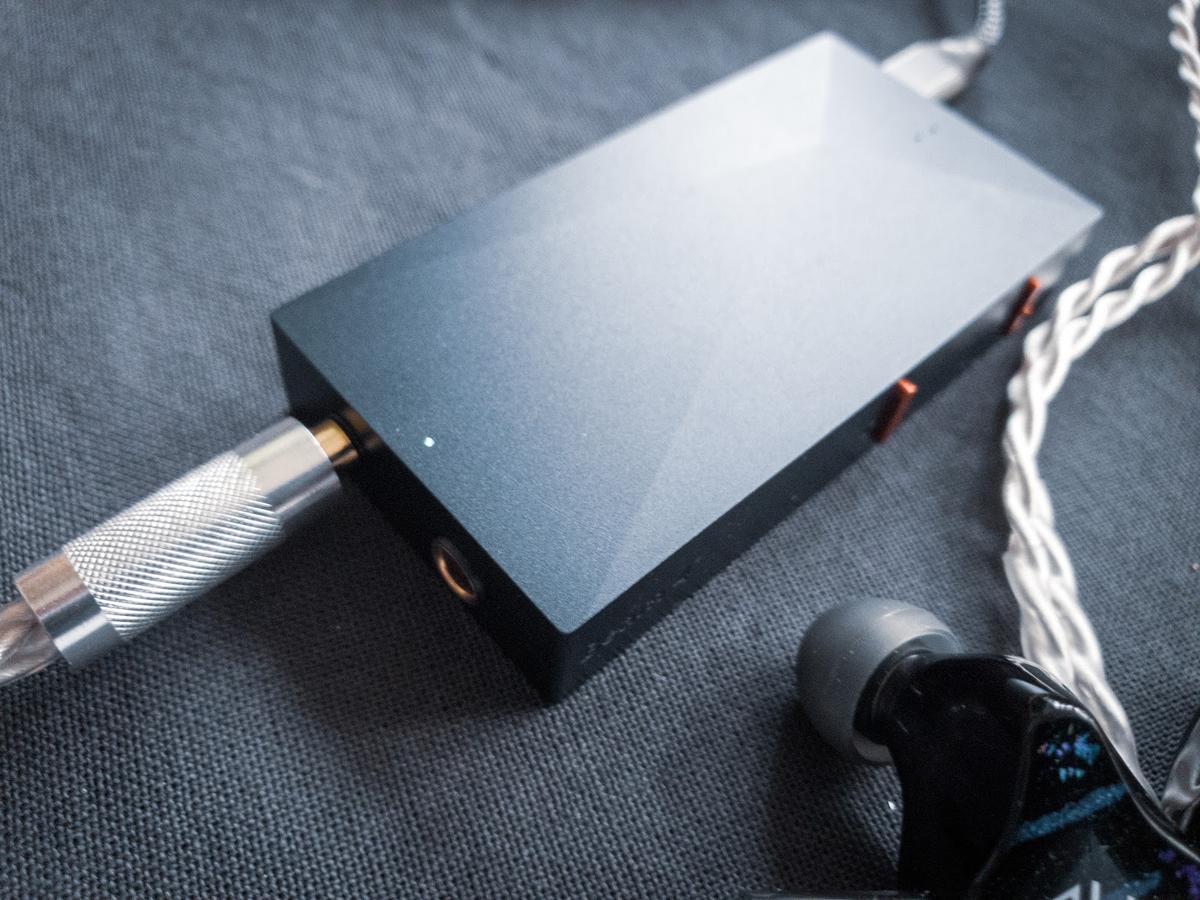The Beam 4 is a compelling option in terms of sound quality and looks but ultimately falls short due to technical problems.
I raised an eyebrow when I learned the Audirect Beam 4 contained the new ES9281 AC PRO audio chipset. ESS’s higher-grade chip seems to be a rarity among available audio gear.
Despite having a somewhat rocky experience with Sabre DACs, lately, I’ve grown to like them generally. Most of the units I’ve tried out use the now-ubiquitous ES9219 chip, and they do their job admirably – they offer a marked upgrade over the built-in audio electronics contained in smart devices.
- Elegant and practical build
- Great sound quality for the price
- Long battery life
- Accessories have the same elegant look and feel
- No Bluetooth
- Form factor awkward for wired portable use
- Noise issues with longer cables
- Stability issues on some desktop machines
- Priced relatively high
Gone are the days when lower price range Delta-Sigma DACs would make me wince with grating highs. Now they’re fine more often than not, but is the Audirect Beam 4 an exception to that rule? Read on to find out!
Technical Specifications
- Form: Portable battery-powered USB DAC/amp
- DAC Chipset: ESS Technology 2xESS9281 AC PRO
- Amplifier: 2xESS9281 AC PRO
- Microphone: Omnidirectional MEMS
- Analog Outputs: SE: 3.5mm, BAL: 4.4mm
- Power Output: SE: 141mW@16Ω, 122mW@32Ω, 7mW@600Ω; BAL: 110mW@16Ω, 230mW@32Ω, 27.78mW@600Ω,
- SNR: -119dB
- THD+N: 0.0003%
- Battery Capacity: 1200 mAh
- Battery Charging: USB-c
- Dimensions: 72 × 37 × 13mm
Packaging
The Audirect Beam 4 comes in a relatively small and understated black cardboard box. The outside shell is firm and nicely textured. Sliding off the lid reveals the unit sitting snugly in a foam cutout.

Taking out the cutout lets one access the included USB-c to USB-c cable and the USB-c to USB-a adaptor. I will note that both the cable and the adaptor aren’t off-the-shelf units and surprised me with their high build quality. Due to its short length, the USB-c cable is intended to work with a phone or other portable device.
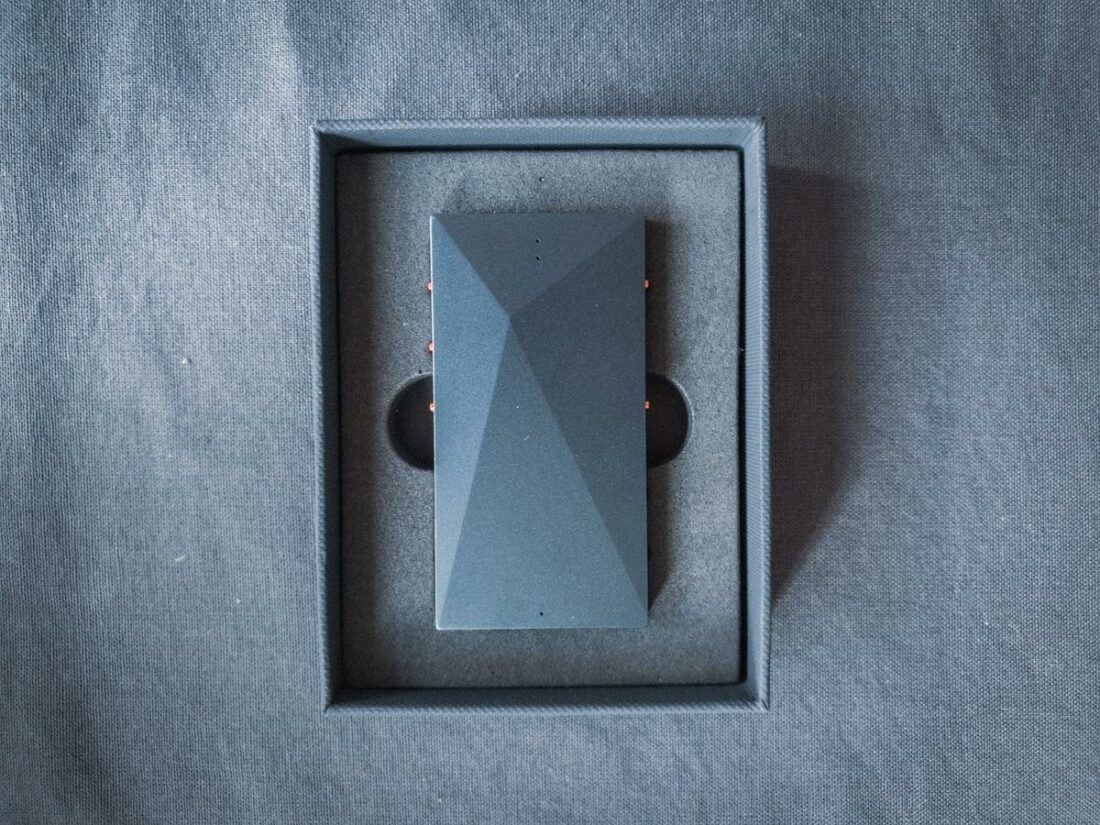
In the box
- Audirect Beam 4 DAC/AMP
- 5cm USB-c to USB-c cable
- USB-c to USB-a adaptor
- Manual
Design
The Beam 4 is very well-made and exudes elegance.
After opening up the box, I took the Beam 4 for a test drive and was immediately wowed by the superb build quality. The enclosure is made from milled aluminum, finished in matte black anodizing. All of the buttons are easy to push as they stick out nicely from the smooth enclosure.
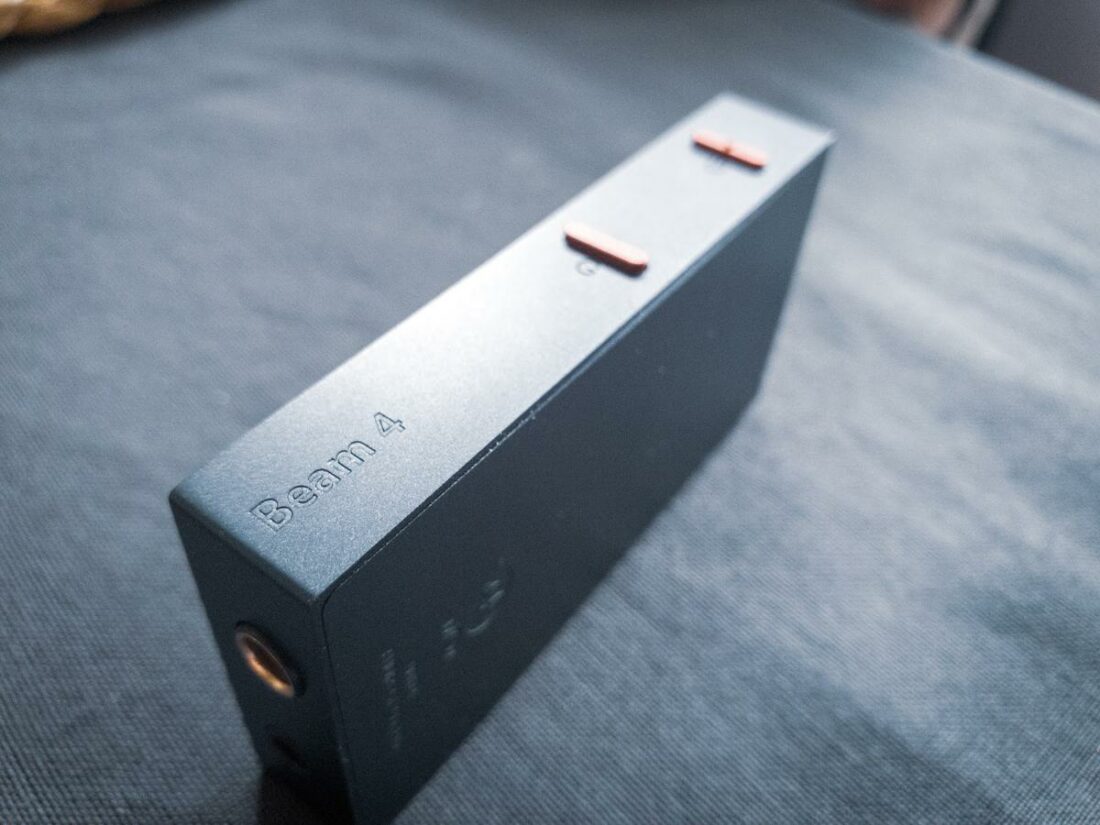
The indicator LEDs shine from milled pinholes and are never annoying. The problem, however, is that pinhole lights aren’t easy to read from the side or in bright sunlight. Not the end of the world for me because I don’t mind being a fashion victim occasionally.
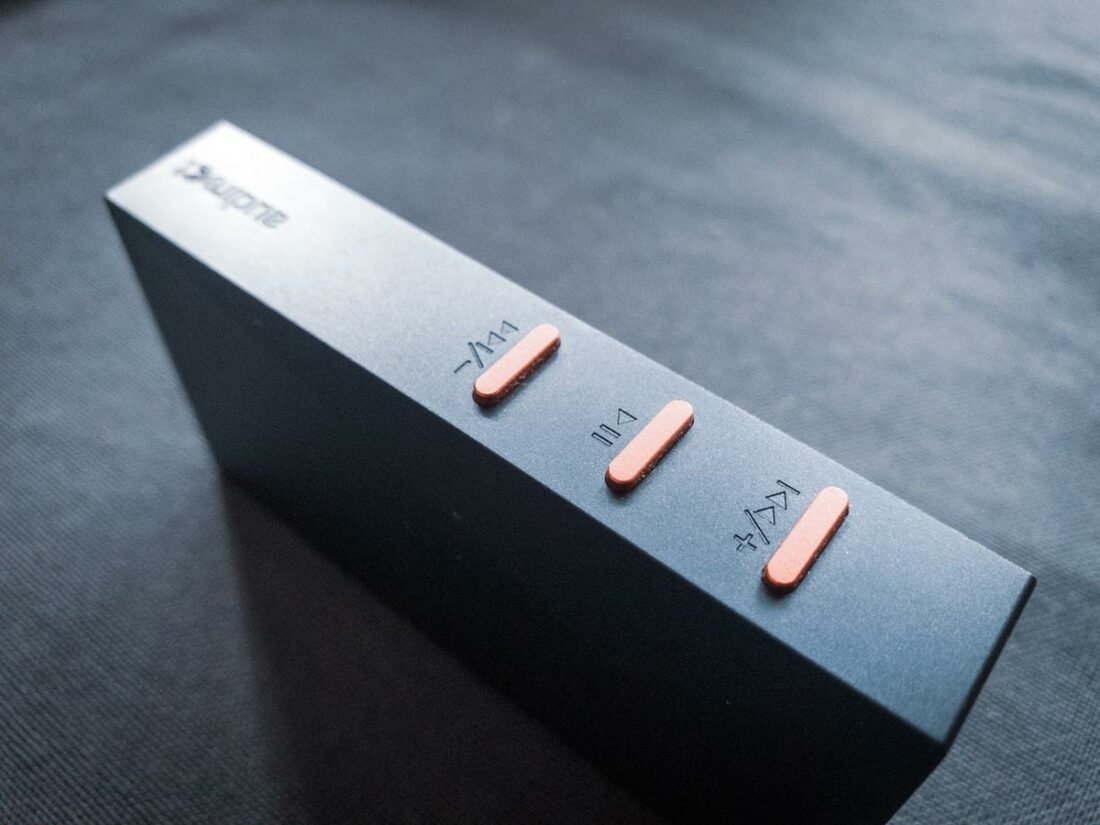
The form factor of the Beam 4 is awkward when paired with a smartphone. The unit is a bit too short to be fastened with rubber bands. I found the best way to keep it close is to use sticky Velcro, nano tape, or something similar.
Battery life
The Beam 4 comes equipped with a sizeable 1200 mAh LiPo cell. The battery management system ensures that with portable devices, you’re not draining the host’s battery and risk tripping current limits. It’s a great system that easily yields a full day’s listening for me.
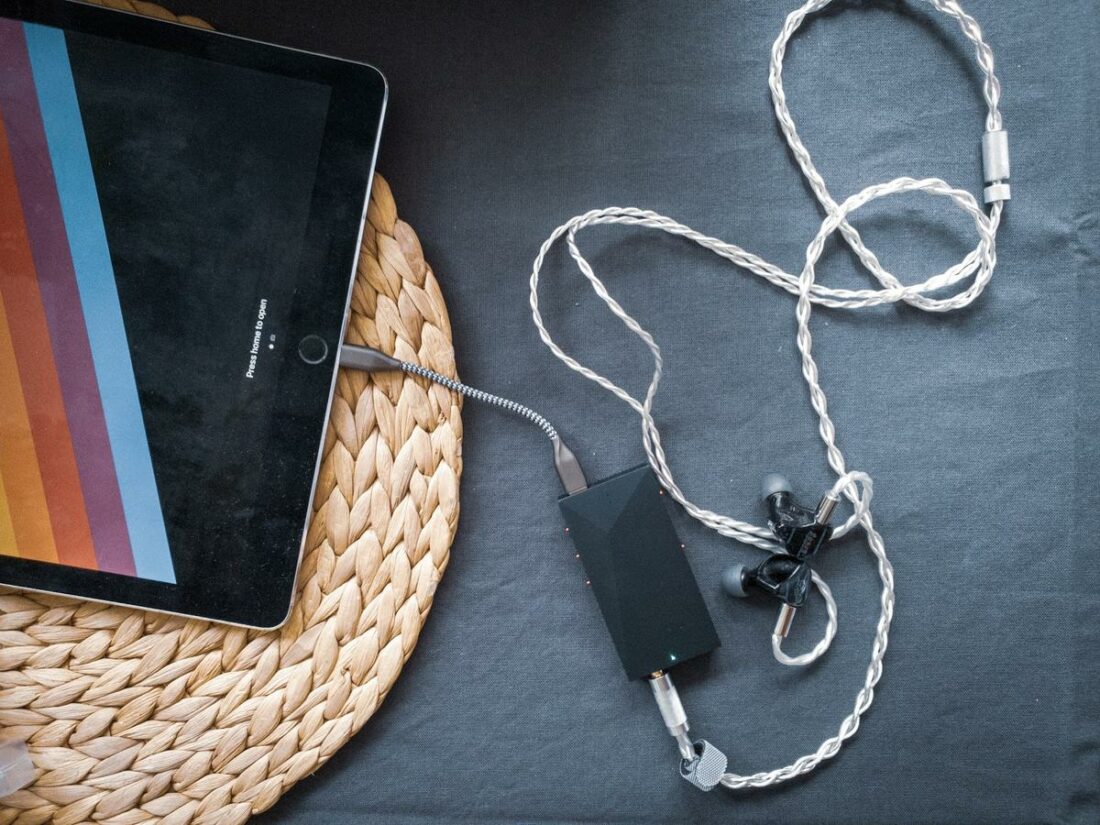
Of course, the actual battery life depends on many factors. The less efficient your headphones are, the more energy it takes to drive them to a particular sound pressure level. The same goes for the music you’re listening to – a minimalistic jazz recording will ask for less juice than blasting Bleed by Meshuggah on repeat for hours.
Internals
At the heart of the Beam 4 is the ESS Technologies ES9281 AC PRO.
As someone who builds (and occasionally sells) headphone amplifiers, I often find these small DAC/amp units boring. There’s not much going on electronics design-wise, as ESS provides all the info to get their all-in-one audio chips going.
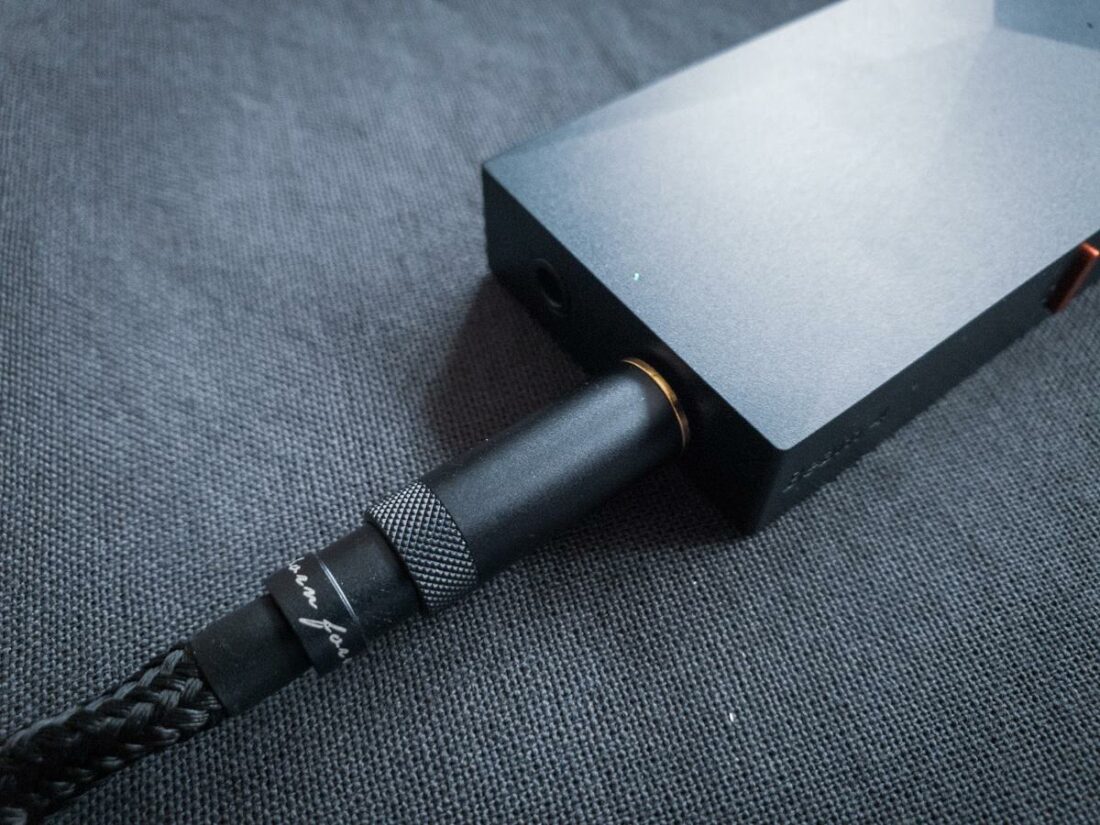
The Audirect Beam4 is one of the very few devices on the market that uses the aforementioned ES9281 AC PRO chip.
Aside from being a relative rarity, the ES9281 AC PRO is a hair higher grade chip than the ES9219. It beats me why it never gained the popularity of its smaller brother. It probably has something to do with the availability and boring stuff like cost.
Aside from the balanced and single-ended outputs, the Beam 4 also has a built-in microphone. It is active when the unit connects to a phone. When connected to a computer, the mic input doesn’t show up.
Output Power
All IEMs and most modern dynamic headphones can be driven from the Beam 4 just fine.
I’m confident the Beam 4 must use a pair of ES9281 AC PRO chips. After all, only one cannot do proper differential drive with double the available voltage if the load permits. To gauge the actual limits of Beam 4, one needs to look at the rated power in various loads.
- Single ended: 141mW@16Ω, 122mW@32Ω, 7mW@600Ω
- Balanced: 110mW@16Ω, 230mW@32Ω, 27.78mW@600Ω
At low impedance loads found in many IEMs, the 3.5mm output will net the best performance as it’s the least current limited. Doing the Ohm’s Law math, we can deduce that 0.094A is the current limit of the Beam 4 – plenty for almost any pair of IEMs out there.
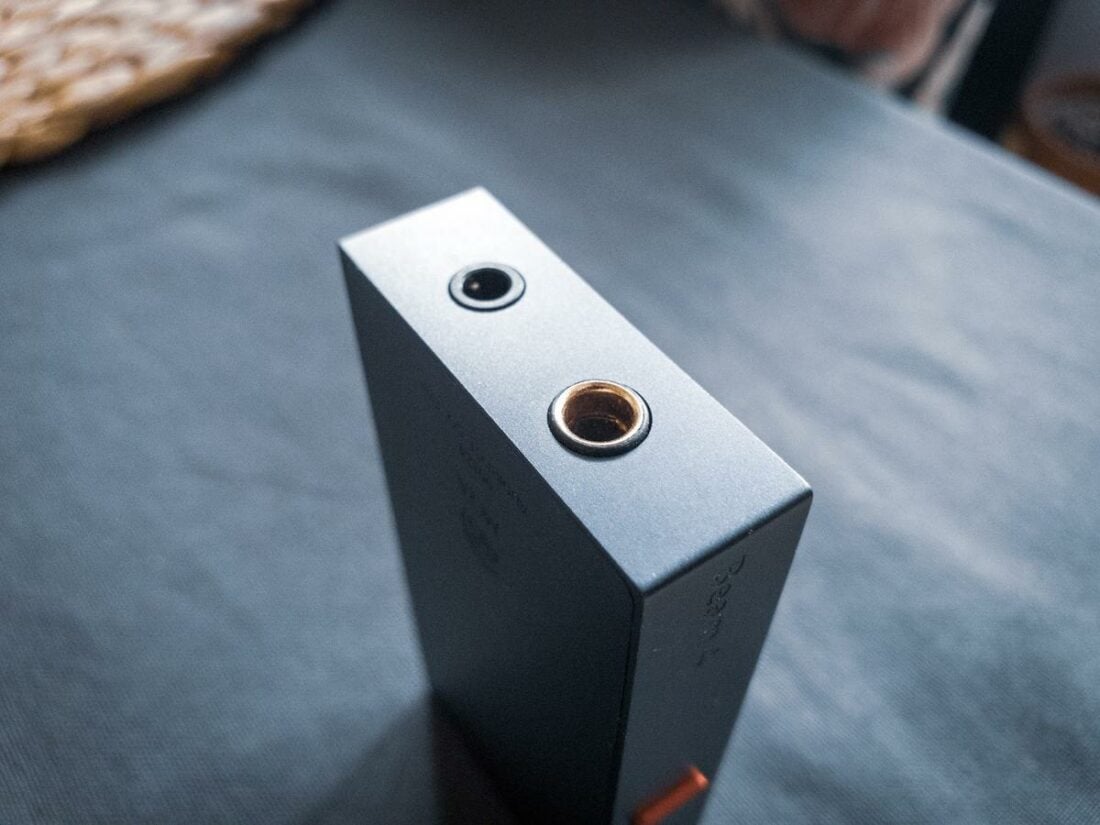
The balanced 4.4mm output comes in handy for high-impedance loads like higher-end dynamic headphones. Doubling the available voltage allows for four times the power on tap, which is exactly what the specs show us. Almost 13 volts is the ceiling for two ES9281 AC PRO chips working in unison.
The Beam 4 has three gain levels so there’s enough for most sane loads. Even at the highest setting, there was no noise on IEMs, and my 350Ω FiiO FT3 had more than enough swing to throw a party.
Audirect Beam 4 Sound
I will start with the bad to get it out of the way. The Audirect Beam 4 would often lose signal lock when I opened the Chrome browser on my PC. No other DAC would display the same behavior on this machine.
Unfortunately, this wasn’t the only issue I encountered.
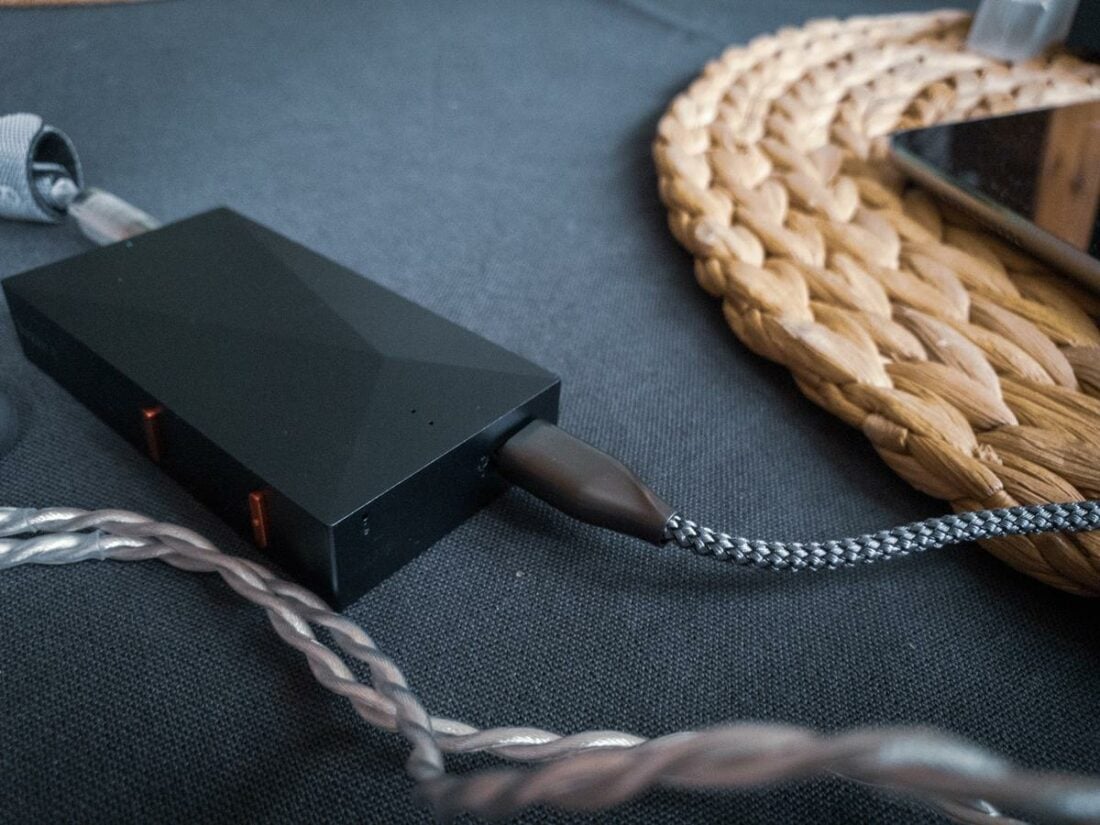
Plugging the FiiO FT3 in with its 3m long cable caused the right channel of the Beam 4 to exhibit a strange noise.
As I shifted the cable in my arms, the noise changed in amplitude and character. The same happened with every host device I tried.
The sound was fine when using the FT3 from the single-ended 3.5mm output, and there was no sign of any trouble. Similarly, plugging any of my IEMs in the 4.4mm output with their 1.5m cables would also give a noise-free listening experience.
As for the actual sound signature of the Beam 4 – it is very similar to the Qudelix 5K. At least as far as tone goes. In terms of technicalities, it is a step up and exhibits that with just about every headphone and IEM I tried.
Overall I am rather impressed with what I hear from the Beam 4. I don’t think it can go toe-to-toe with many desktop setups, but as far as transportable all-in-ones, it is certainly good enough.
Where to Buy
Conclusion
I used the Audirect Beam 4 as my transportable desktop system, which is where it excels. It looks elegant enough not to be out of place on any desk and provides a great listening experience with the right headphones or IEMs.
In my opinion, the most important thing missing from the Beam 4 is a Bluetooth module. Gone are the days of multi-story portable gear sandwiches. A Bluetooth connection would allow for much more convenient portable use than using the cable to put extra mileage on the single connector our phones are left with.
If you need a rather versatile transportable desktop system, then the Beam 4 might be the thing for you. Just note that you may run into noise issues with long cables. For portable use, I recommend going with the Qudelix 5K or the venerable iFi xDSD Gryphon if the best is what you need.
